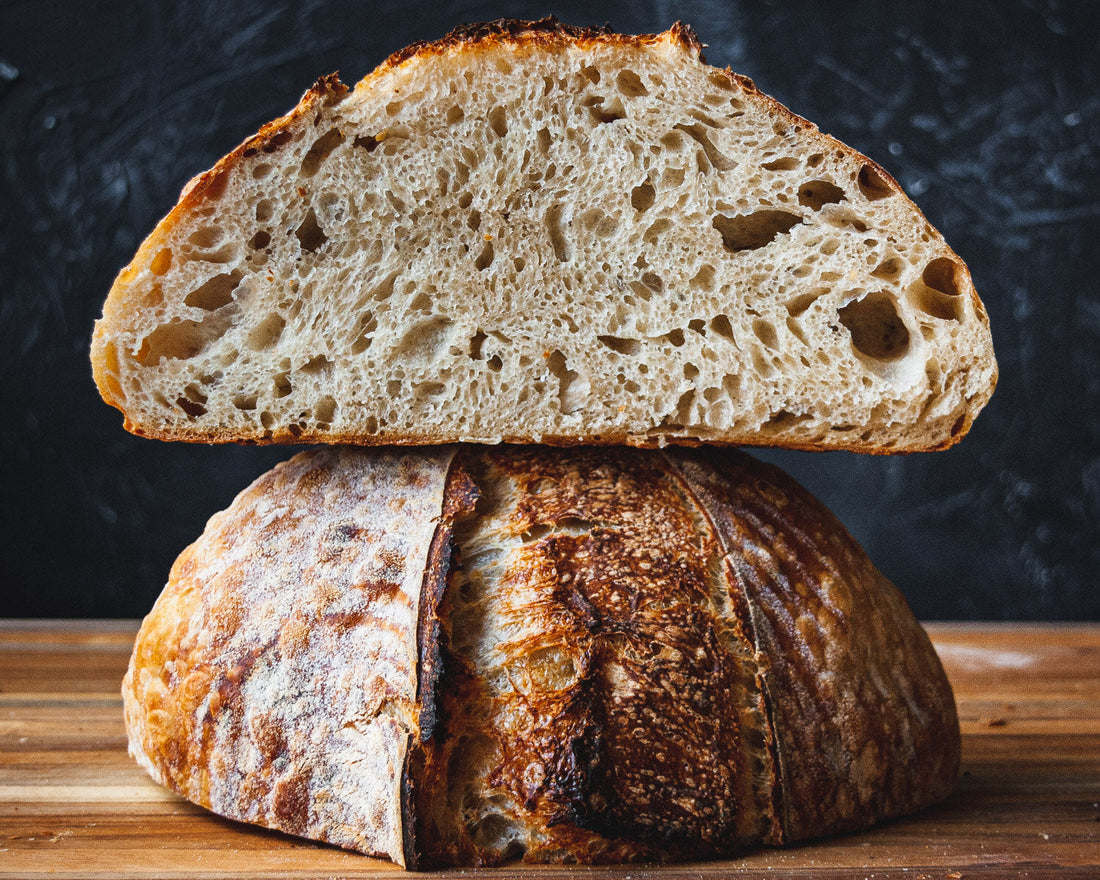
Intro to making Sourdough Bread
Sourdough bread is made using a naturally fermented mixture of flour and water called a sourdough starter—no commercial yeast required. The wild yeast and bacteria in the starter cause the dough to rise and give sourdough its signature tangy flavor.
Step 1: Make or Get a Starter
You need a sourdough starter, which is a mixture of flour and water that's been fermented for several days.
Starter Basics:
- Mix equal parts flour and water (e.g. 50g each) in a clean jar.
- Let it sit at room temperature.
- Feed it daily (discard half, then add fresh flour and water).
- After about 5–7 days, it should be bubbly and smell slightly tangy—ready to use!
Step 2: Prepare the Dough
Basic Ingredients:
- 500g bread flour
- 350g water
- 100g active sourdough starter
- 10g salt
General Timeline:
- Mix & Autolyse (combine flour + water, rest 30 mins)
- Add Starter & Salt, mix until fully incorporated
- Bulk Fermentation: Let the dough rise at room temp for 4–6 hours, stretching and folding every 30–60 mins
- Shape the Dough into a ball or batard
- Cold Proof: Place in a floured basket/bowl, cover, and refrigerate overnight (8–12 hours)
Step 3: Bake the Bread
Preheat your oven to 475°F (245°C) with a Dutch oven inside.
Score the top of your dough.
Transfer to the hot Dutch oven, bake covered for 20 minutes, then uncovered for another 20–25 minutes until golden brown.
Let it cool completely before slicing—it finishes cooking while cooling!
Tips for Beginners:
Be patient: sourdough is slower than yeast bread.
Use a kitchen scale for best results.
Watch the dough, not the clock. Temperature and environment matter a lot.
Practice makes better—every loaf teaches you something.